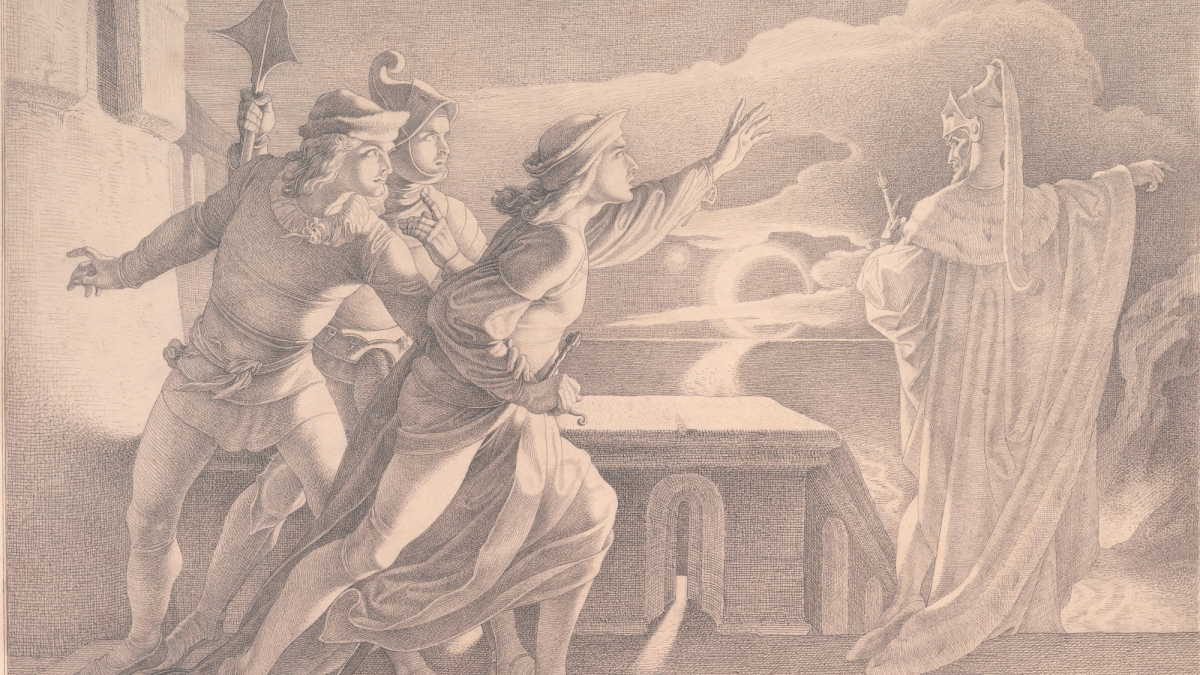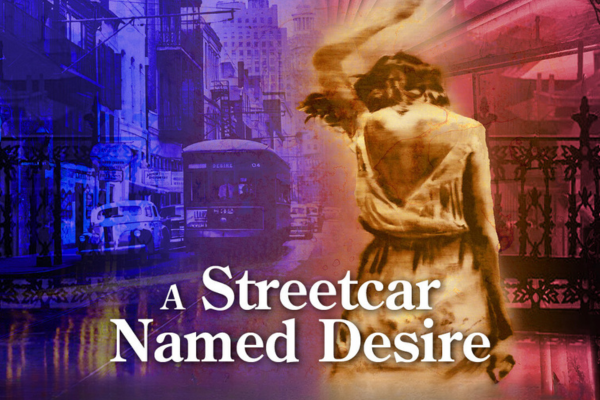
Table of Contents
Theater- is the mirror of the human soul—a space where emotions, conflicts, and dreams intertwine in a dance of words and light. Every story brought to the stage holds the power to move, provoke, and transform perception. In a world driven by speed and distraction, theater offers a rare moment of stillness, reconnecting audiences with truths often buried beneath the noise of everyday life. From classical tragedies to grand musicals, from stark realism to surreal performances, each narrative offers an unforgettable experience. These are the 7 Powerful Theater Stories You Need to Experience—essential tales that deserve a place in every life.
1. The Tragedy of Hamlet – The Madness of a Crowned Soul

The Prince’s Descent Into Chaos and the Collapse of a Kingdom
1. The Tragedy of Hamlet – The Madness of a Crowned Soul is not merely a tale of royal betrayal; it is a penetrating psychological exploration of loss, corruption, and the fragile boundaries of sanity. Set within the cold, marble chambers of Elsinore Castle, this masterpiece by William Shakespeare elevates theater to a realm where thought becomes agony, action breeds despair, and truth decays beneath the weight of political treachery.
At its center stands Hamlet—the grieving son, reluctant avenger, and introspective philosopher. His world fractures when the ghost of his slain father reveals a truth too monstrous to comprehend: fratricide cloaked in regality. The revelation is both catalyst and curse. As Hamlet grapples with this spectral command, he descends into a maddening labyrinth of doubt, morality, and vengeance.
There is nothing linear about his spiral. He speaks in riddles and soliloquies, masking lucidity with lunacy. Yet within his fractured speeches lies piercing clarity—a man dissecting the meaning of life with surgical eloquence. “To be, or not to be” is not a question—it is a reckoning. With every word, Hamlet exposes the rot not only within the Danish court but within the human soul itself.
1. The Tragedy of Hamlet – The Madness of a Crowned Soul is a play where nothing is what it seems. Claudius, the newly crowned king, feigns piety but drips with bloodied guilt. Gertrude, Hamlet’s mother, appears complicit but remains enigmatic. Ophelia is love wrapped in obedience, crushed under patriarchal weight until her own mind drowns in grief. Even Rosencrantz and Guildenstern, childhood companions, become agents of betrayal. Trust erodes. Truth withers. What remains is spectacle—grand, tragic, inescapable.
Hamlet’s feigned madness becomes indistinguishable from real delirium. He confronts his mother with accusations that scald. He stages a play within a play to catch a king’s conscience. He kills Polonius behind a curtain, mistaking shadow for substance. Each act further isolates him, and yet he persists, locked in a battle between duty and despair. His descent is not chaos without purpose—it is collapse sculpted by conscience.
The language of the play is operatic in its intensity. It weaves venomous wit with existential anguish. Each phrase is loaded with meaning, every pause echoing with torment. The audience does not merely observe Hamlet’s plight; they feel it reverberate in their bones.
By the end, the court lies in ruins, its rulers slain, and Hamlet himself mortally wounded. Yet in death, he achieves a strange peace—a relinquishing of the crown’s poison. The tragedy concludes not with triumph, but with silence. A kingdom lost, a soul consumed, a legacy immortal.
1. The Tragedy of Hamlet – The Madness of a Crowned Soul is a dramatic odyssey into the recesses of the human condition. It compels confrontation with grief, loyalty, madness, and mortality—an experience that transcends the stage and lodges deep within the psyche.
2. A Streetcar Named Desire – The Cracked Facade of Southern Elegance

Illusions, Power, and the Slow Collapse of a Porcelain World
2. A Streetcar Named Desire – The Cracked Facade of Southern Elegance is a haunting portrayal of a world fading into obsolescence, of gentility fraying at the edges, and of a woman caught between delusion and devastating truth. Tennessee Williams’ Pulitzer Prize-winning masterpiece delves into the fragility of identity, the brutality of desire, and the merciless tension between appearances and reality.
At the heart of the drama stands Blanche DuBois, a figure sculpted from fading grandeur and desperate hope. Draped in silk, her speech laced with lyrical flourishes, she embodies the remnants of a decaying Southern aristocracy. Her arrival at her sister Stella’s cramped New Orleans apartment is not just a geographical relocation—it is a spiritual exile. She steps off that symbolic streetcar named Desire, only to board another named Cemeteries, bound for the raw and unfiltered truth of Elysian Fields.
Blanche’s world is a curated illusion, polished and perfumed to hide rot and ruin. She clings to charm, music, and moonlight as shields against the encroaching dark. But the apartment, humid and stifling, offers no sanctuary. Here, fantasy crumbles under the weight of Stanley Kowalski’s brute realism. Stanley—primal, physical, unapologetically crude—sees through Blanche’s theatricality and rips the veil from her carefully constructed reality.
2. A Streetcar Named Desire – The Cracked Facade of Southern Elegance is, at its core, a collision between old-world fragility and post-war American force. Blanche, like the South she represents, is a relic—haunted, proud, broken. Stanley is the present—loud, confident, merciless. Their battle is not just personal; it is symbolic. She clutches decorum. He wields dominance. She lives in metaphor. He operates in fact.
The play pulses with sensual tension, charged silences, and words that wound. Every line carries subtext. Every gesture lingers. The confined setting becomes a pressure cooker, forcing characters to confront truths they cannot escape. Stella, torn between loyalty to her sister and desire for her husband, becomes the silent witness to Blanche’s unraveling and society’s cruelty.
Blanche’s descent into madness is not sudden—it is a slow and exquisite disintegration. The revelations of her past, the loss of her home, the death of her young husband, and her desperate search for redemption—all emerge like bruises beneath porcelain skin. She is not merely a liar; she is a woman drowning in the echo of vanished dreams.
The climax is devastating in its rawness. Stanley’s final act of dominance is not just physical—it is existential. He extinguishes the last flicker of Blanche’s illusion, leaving her shattered and removed from the world that refused to understand her poetry.
2. A Streetcar Named Desire – The Cracked Facade of Southern Elegance is a masterwork that exposes the tension between illusion and reality, power and vulnerability. It is not just a story—it is a lament for lost worlds, for misunderstood women, and for the dreams that shatter under the weight of survival.
3. Les Misérables – The Anthem of Redemption and Revolt

Grace, Guilt, and the Grand Symphony of the Human Spirit
3. Les Misérables – The Anthem of Redemption and Revolt is not merely a musical epic or a theatrical sensation. It is a thunderous hymn to human resilience, a sweeping panorama of suffering, sacrifice, and salvation. Adapted from Victor Hugo’s towering novel, this theatrical triumph transforms the prosaic into the poetic, setting the stage ablaze with emotion, ideology, and incandescent humanity.
At the heart of the narrative pulses the soul of Jean Valjean—a man reborn through compassion. Condemned to nineteen years of brutal imprisonment for stealing bread, Valjean emerges from the shadows as a fugitive. But his life is transfigured by a single act of mercy. The bishop’s silver, freely given instead of reclaimed, becomes a talisman of grace. From that moment, Valjean devotes himself to redemption—not through words, but through tireless, moral action.
3. Les Misérables – The Anthem of Redemption and Revolt explores the complexity of justice through its relentless antagonist, Inspector Javert. Javert, whose devotion to the law borders on fanaticism, sees in Valjean a challenge to the immutability of right and wrong. Their ideological clash—mercy versus rigidity, humanity versus law—forms one of the most compelling duels in theatrical literature. As Valjean evolves, Javert crumbles, ultimately undone by his inability to reconcile justice with compassion.
Yet Les Misérables is not content with a single redemption arc. It weaves a sprawling tapestry of voices—each yearning, each broken, each defiant. Fantine’s fall from purity into despair echoes the cruelty of a society blind to female suffering. Her haunting aria, “I Dreamed a Dream,” is less a lament than an indictment of a world that punishes the vulnerable for daring to hope.
The story widens. It breathes revolution.
On the bloodied barricades of Paris, students raise their voices not for themselves, but for a vision of liberty that demands everything. Led by the idealistic Enjolras, they embody youth’s incandescent belief in change. Their anthem, “Do You Hear the People Sing?”, is more than a rallying cry—it is an eternal invocation of courage in the face of impossible odds.
But even amidst revolt, tenderness survives. The orphaned Cosette, the brave Éponine, the mischievous Thénardiers—all are drawn into the operatic swell of fate. Love blossoms in war-torn silence. Hearts are broken not by bullets, but by distance and duty.
As the story unfurls toward its transcendent conclusion, Valjean’s journey completes its arc. He forgives, protects, and ultimately surrenders his life in quiet dignity. The finale—soaring, mournful, celestial—proclaims a higher law than Javert’s: that to love another person is to glimpse the face of God.
3. Les Misérables – The Anthem of Redemption and Revolt is a theatrical odyssey of astonishing emotional range. It carries the audience through shadow and light, from prison cells to palaces, from whispered prayers to revolutionary battle cries. It does not ask for applause—it demands remembrance.
4. Death of a Salesman – The Quiet Devastation of the American Dream
Arthur Miller’s Death of a Salesman is not a spectacle of grandeur. It is intimate, brutal, and suffocating. Willy Loman is an everyman dismantled by delusions, dragging his weary briefcase through the rubble of shattered aspirations. The tragedy here is insidious—it does not scream; it whispers.
Loman’s pursuit of success, twisted by societal expectations and personal inadequacies, mirrors the silent despair of millions. He is not a hero. He is a man lost in mirrors, chasing shadows of self-worth. His wife Linda’s quiet strength, his sons’ anger and disillusionment, form a tragic constellation around him.
What makes this one of the 7 Powerful Theater Stories You Need to Experience is its surgical precision. Miller cuts into the American psyche with chilling authenticity. The play’s climax, understated and inevitable, leaves an aftertaste of ash. It is a lesson in tragedy without spectacle—a collapse under the weight of invisible burdens.
5. The Crucible – Fear, Fire, and the Theater of the Absurd
In The Crucible, Arthur Miller repurposes the Salem witch trials as a visceral allegory for McCarthyism and mass hysteria. But it transcends its context, becoming a timeless meditation on integrity, fanaticism, and communal paranoia. John Proctor’s moral crucifixion is not just a character arc—it is a war cry against ideological tyranny.
The stage becomes a courtroom, a gallows, a confessional. The characters sweat with desperation, their voices tinged with righteous fervor or calculated malice. Abigail Williams, the architect of chaos, is a tempest in human form. Her lies tear through lives like wildfire, exposing the terrifying ease with which society consumes itself.
This is not theater for comfort. It is theater for reckoning. To experience The Crucible is to watch civilization unravel from within. Its relevance is unsettling, its lessons eternal. As one of the 7 Powerful Theater Stories You Need to Experience, it stands as a stark warning: silence can be as damning as guilt.
6. Angels in America – The Fantasia of Suffering and Salvation
Tony Kushner’s Angels in America is a theatrical colossus—a fever dream steeped in heartbreak, satire, mysticism, and political fire. Spanning continents of the soul and the realities of the AIDS crisis in Reagan-era America, it blurs lines between corporeal and celestial, truth and hallucination.
Prior Walter, battling AIDS and abandonment, becomes a modern-day prophet, visited by angels and haunted by mortality. His journey is interwoven with that of Louis, Harper, Roy Cohn, and a chorus of ghosts and visions. The narrative doesn’t just challenge norms—it obliterates them. Themes of identity, hypocrisy, justice, and spirituality collide in a kaleidoscope of theatrical boldness.
Staging this epic is a masterclass in ambition. The set breathes. The characters transcend archetypes. The language dances between poetic and profane. Few plays dare so much. Fewer still succeed. But Angels in America is a miracle wrapped in tragedy. Among the 7 Powerful Theater Stories You Need to Experience, it is the most transcendent—soaring beyond genre, geography, and even logic.
7. The Phantom of the Opera – Beauty in the Shadows
Andrew Lloyd Webber’s The Phantom of the Opera is a sensory spectacle, but beneath the glittering chandeliers and haunting music lies a tale of loneliness, obsession, and unrequited love. The Phantom is no villain, but a wounded genius cloaked in darkness. His subterranean lair beneath the Paris Opera House becomes a refuge—and a prison.
Christine Daaé, caught in a perilous triangle of affection and fear, becomes the embodiment of innocence entangled in artistic fervor. Raoul, her suitor, represents light, reason, and convention. The Phantom, however, embodies passion unrestrained—a creative force cursed by deformity and despair.
This story endures not because of its spectacle, but because of its aching humanity. The music seduces, but the soul of the narrative lies in its melancholy heartbeat. “The Music of the Night” is not merely a song—it is a lullaby for the lost, a hymn for those who love from the shadows.
To witness The Phantom of the Opera on stage is to surrender to atmosphere. The audience is submerged in velvet, mist, and reverberating chords that seem to emanate from the architecture itself. It is an opulent ghost story that lingers long after the curtain falls. As one of the 7 Powerful Theater Stories You Need to Experience, it promises not just entertainment, but enchantment.
Final Curtain: Theater as Transformation
Theater is more than performance—it is ritual. It binds us to our ancient past and flings us toward our speculative futures. These 7 Powerful Theater Stories You Need to Experience serve as vessels for human truth, dressed in costume and lit by footlights. They invite us to feel, to rage, to question, and to grieve—together, in the dark, suspended between illusion and revelation.
From Shakespeare’s bloodstained corridors to Kushner’s angelic visitations, from the broken salesmen of Miller to the spectral melodies of Webber, each tale holds up a mirror. Sometimes, it reflects who we are. Sometimes, who we fear to become. Always, it illuminates the soul’s uncharted territories.
To experience these plays is not to consume art—it is to be consumed by it.